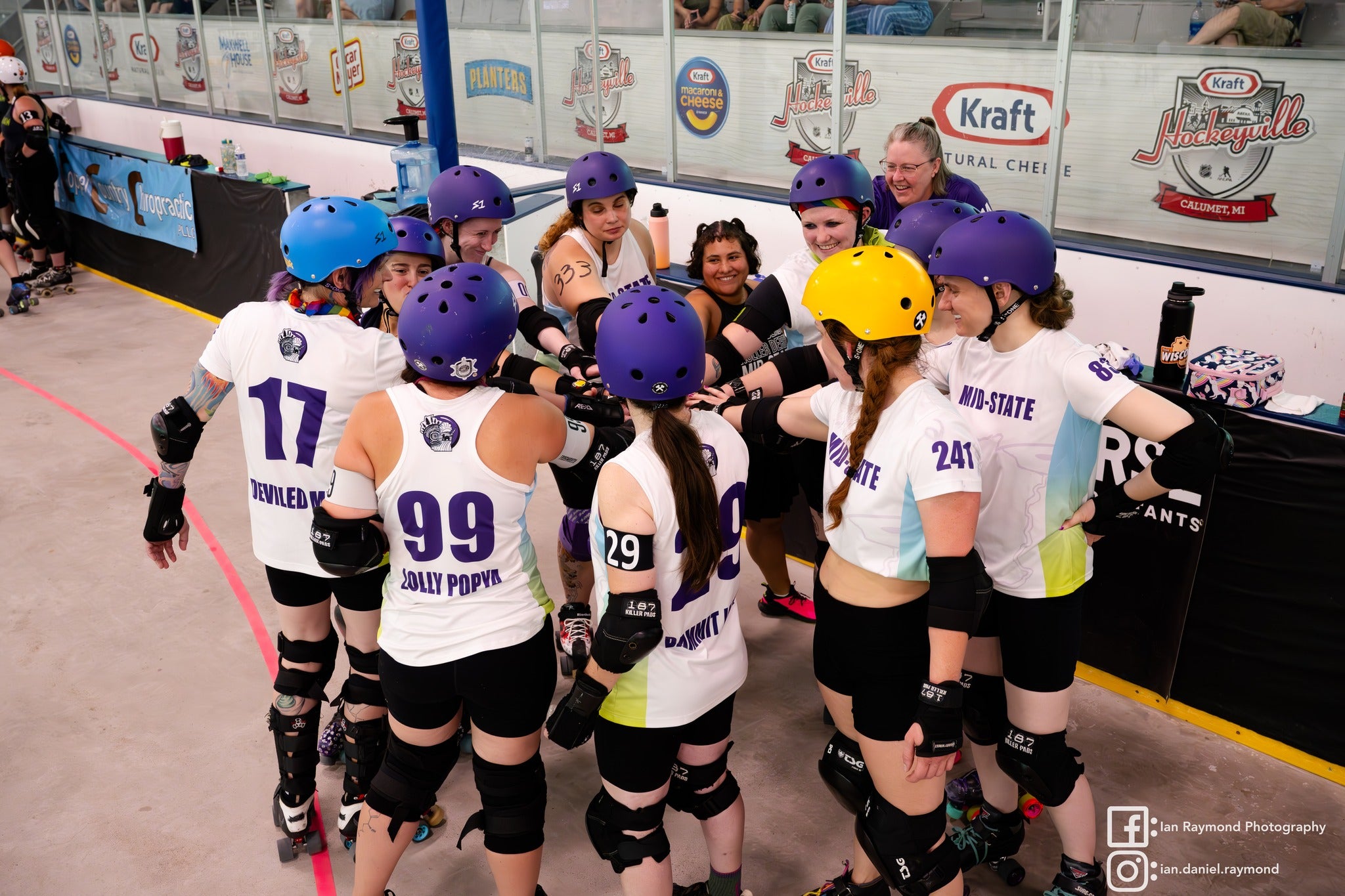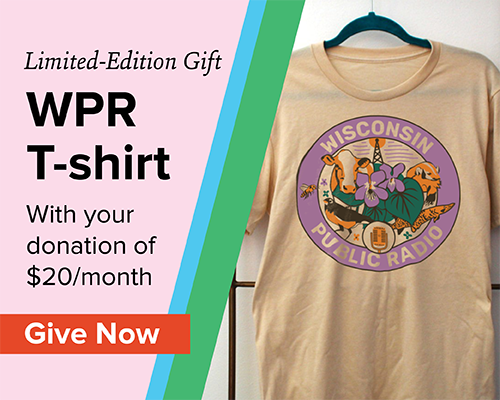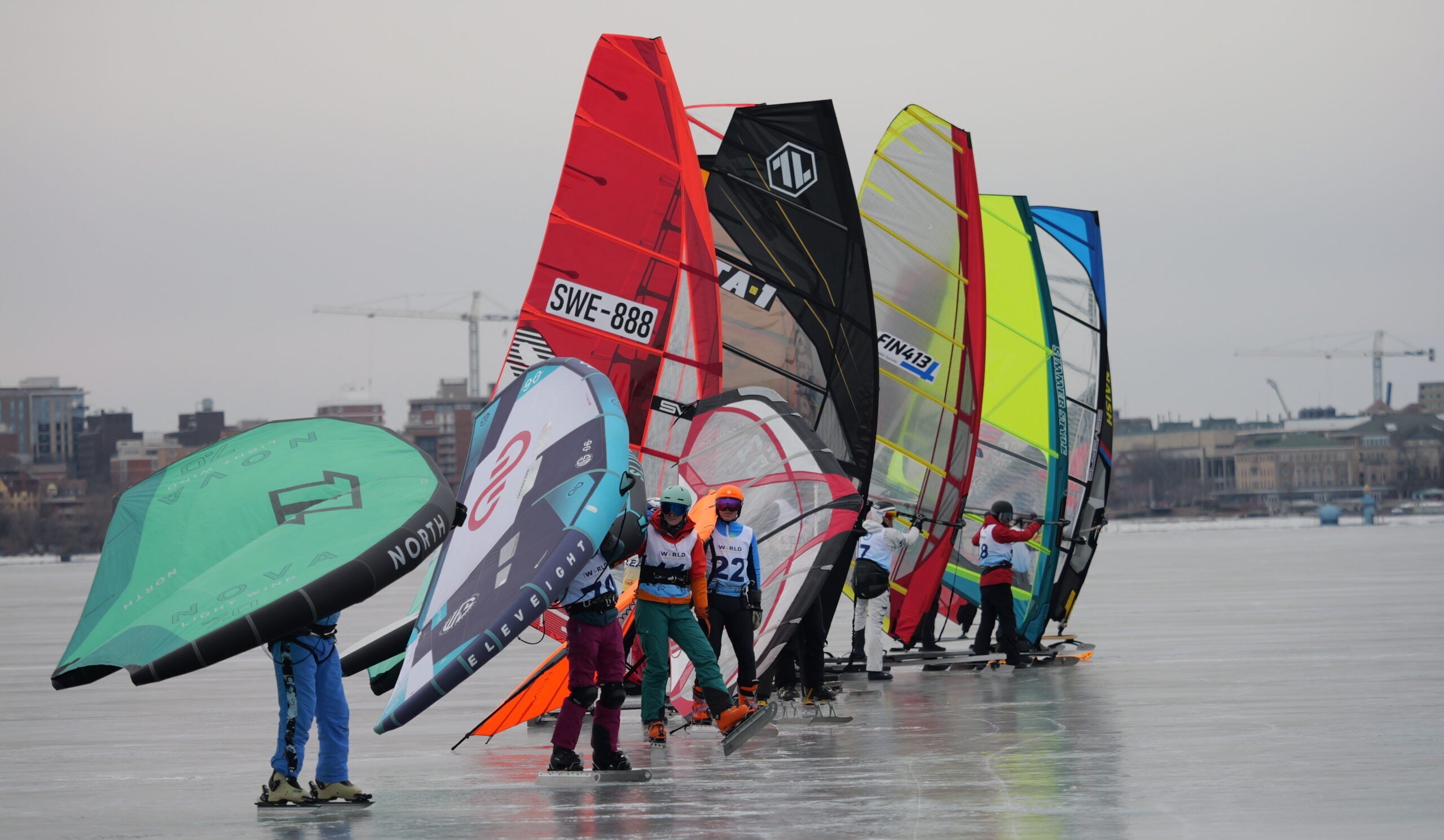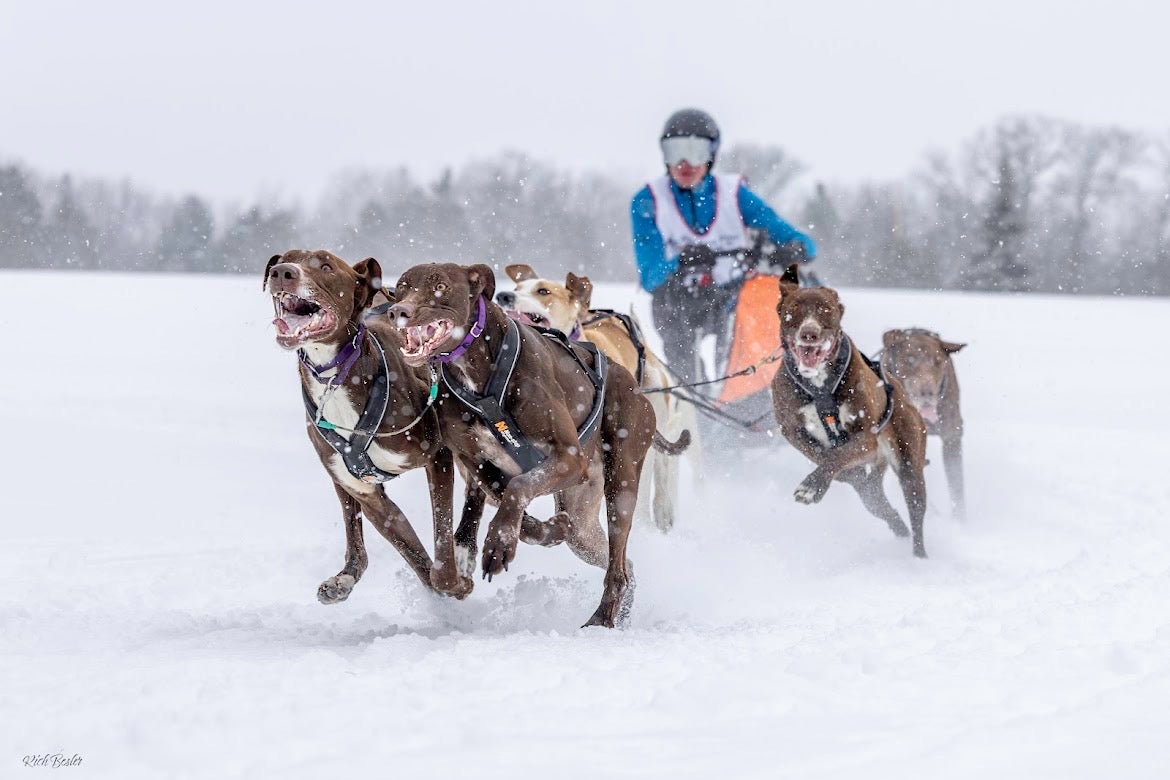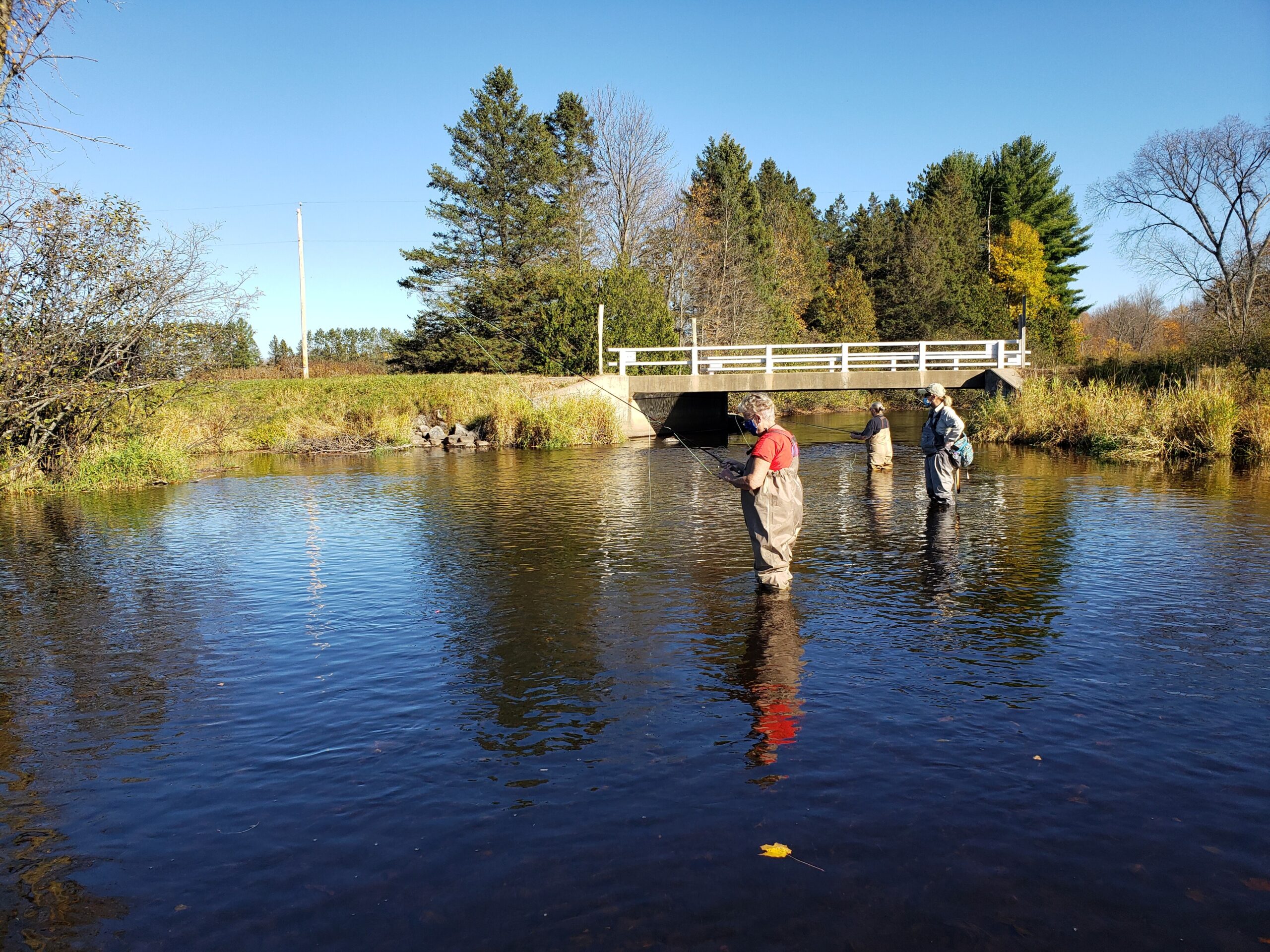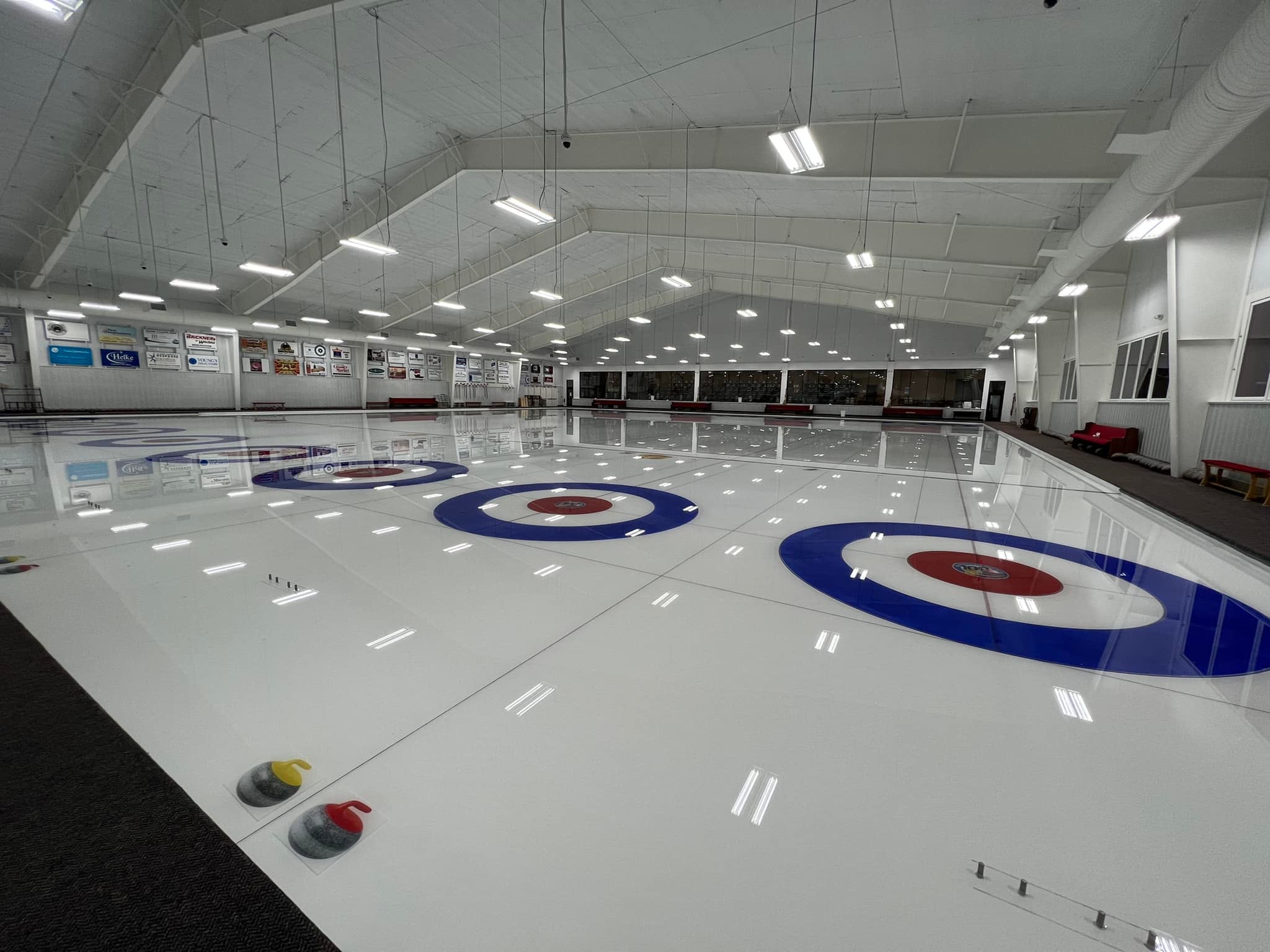Roller derby has come a long way since the 1930s, when a Chicago-based sports promoter invented it during the Great Depression.
In central Wisconsin, the sport has taken root thanks to teams like Mid State Roller Derby, based in Stevens Point.
Founded 14 years ago, the nonprofit Mid State Roller Derby brings together women from all walks of life who are united by their love of competition and community.
Stay informed on the latest news
Sign up for WPR’s email newsletter.
One standout skater is Amanda Heineck, also known as “The Euthanizer,” a veteran with Mid State Roller Derby who also skates for Team Wisconsin and previously served on Mid State’s board of directors.
Heineck’s journey into roller derby started nearly a decade ago, when she stumbled upon a flyer and decided to give it a try. Now, Heineck is not only a player but a passionate advocate for the sport’s distinct blend of athletic challenges and personal growth.
Heineck told WPR’s “Morning Edition” that what makes roller derby special, beyond the hard-hitting action on the track, is the sense of community the sport fosters among players. For Heineck, roller derby offers a space where women can grow, support one another and push their physical limits.
“It gives you those goosebumps and gives you that drive to try something new,” Heineck told WPR’s Shereen Siewert. “Derby isn’t something that’s a common sport. Being able to grab something different in the world as a hobby, I think that that’s just enough reason to give it a try.”
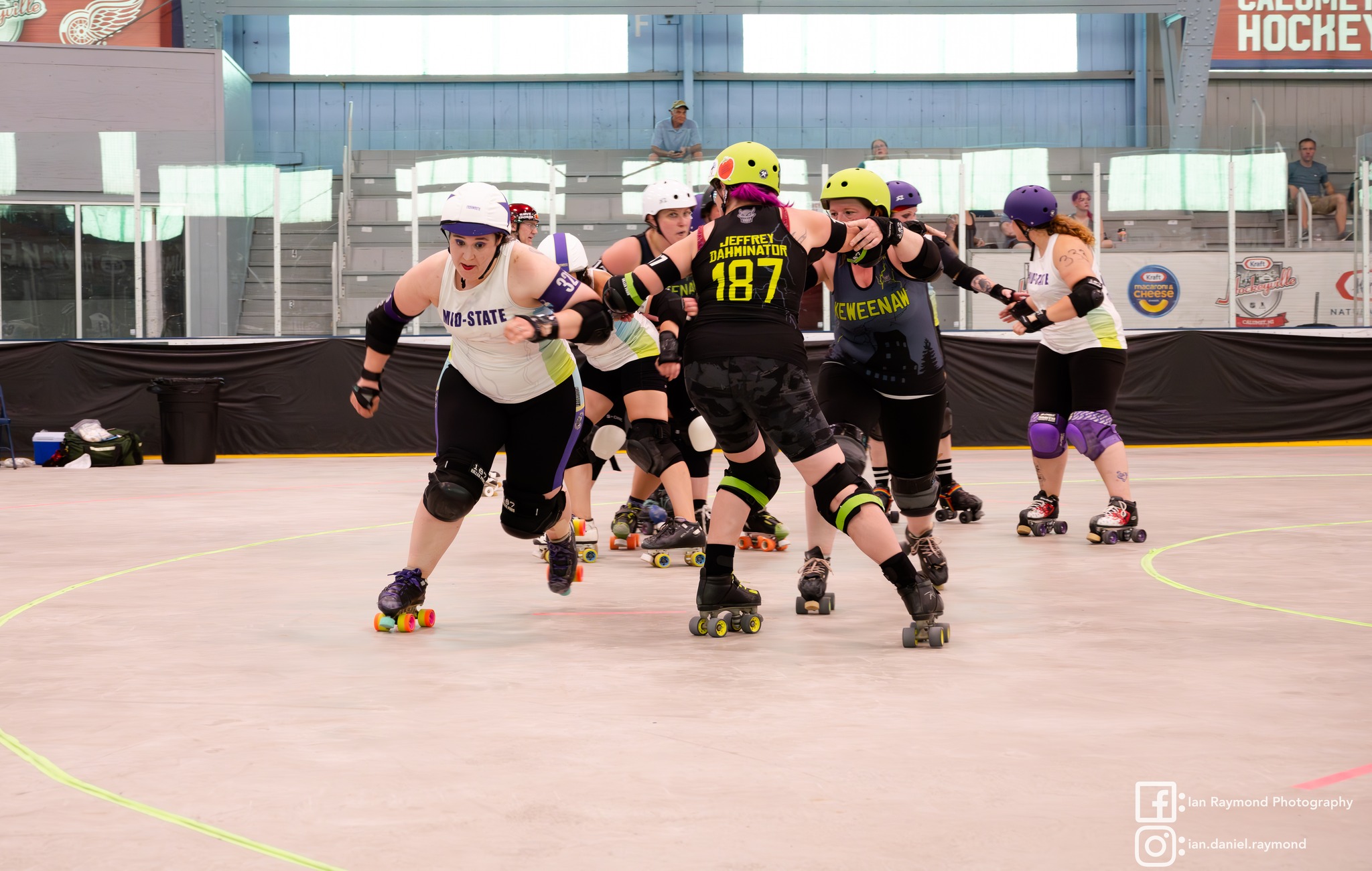
Mid State Roller Derby, formerly named Mid State Sisters of Skate, is holding training sessions for anyone interested in learning more about the sport. The September sessions for Roller Derby 101 began Sept. 8, though interested women ages 18 and older can join at any time. Another session is set to begin in October. All equipment is provided and no prior skating experience is required.
The following transcription was edited for brevity and clarity.
Shereen Siewert: I have to know. How did you wind up with the name “The Euthanizer?”
Amanda Heineck: Oh, yes. I’m actually in the veterinary profession, starting as a technician at an animal hospital. Obviously, euthanasia is what happens when you put your pets to sleep, so that’s where that came from.
Everybody has a nickname. When you join, you either fall into a nickname or have something in mind connected to your past. Sometimes it’s work you’ve done previously or a nickname your family calls you. Sometimes you adapt a name after we get you on skates and you learn how to do all the fun things.
Some people will pick up names related to things that happen to them while they are skating. I love the example of Vomit Comet, a skater who vomited while skating for a long time. I’ve seen a nurse who uses the name IV Tranquilizer, another good name. We have lots of creative names in our league and that’s part of the fun, picking out the name of your alter ego.
SS: Give us a basic rundown of the rules. How do you play?
AH: Derby itself is on a women’s flat track. Originally, it was on a banked track, which started in Texas, but we actually play on a flat track.
Each bout consists of jams, which can last a maximum of about two minutes. At the start of each jam you have five skaters from each team who take the track: the blockers and one jammer. The jammer is the one with a star on her head, and they’re the players who score points.
The goal for the jammer is to make their way through a pack of blockers, skate all the way around and pass the opposing blockers’ hips to score points. Meanwhile, the blockers themselves are working together to play defense and offense, so you want to help your jammer get through, but you also want to prevent the other team’s jammer from getting through as well, so they don’t get points. There is a lot of strategy there.
This is full contact sport, so we do wear wrist guards, elbow pads, knee pads, mouth guards and a helmet. We can hit with our hips, we can hit with our flanks and our sides. We can also hit with our shoulders. Those are all the target zones that we’re able to use when we’re hitting each other to get that person out of the way so your jammer can score some points.
SS: How much roller skating skill does it take to be part of the team?
AH: None! I can guarantee that most people when they start probably would raise their hand and say, well, I went to the roller rink when I was younger. Our parents took us to the roller rink on a Sunday afternoon and that is the only roller skating ability I had.
We’ve had people who have never even had skates on before at all. Some have ice skating experience and we do have figure skaters, speed skaters and hockey players who play derby. Eventually you adapt, but you do not need to know how to skate to play.
SS: What drew you to this personally?
AH: Personally, my friend and I were looking for something to do. We were kind of over the whole bar league volleyball kind of thing. It was getting a little bit too competitive for us and we ended up seeing a flyer at Arbuckle’s in Stevens Point and we’re like, roller derby? What the heck, let’s give it a go. My bestie and I started playing together and we were hooked the second we joined. I’ve been a part of nonprofit organizations in the past, and I kind of had that athleticism in my bones. Also, the nonprofit aspect appealed to me as well.
SS: Roller derby is known for its strong sense of community and its diversity. How would you describe the dynamics within your team, both on and off the track?
AH: I would say we are a group of women that are empowered. We like to foster our personal growth for each other in the sport and we have a tight bond. It’s a group of people who have each other. A lot of us joined derby in different stages of life. Some of us joined because we wanted something else to do. We have mothers who just like to get away, so they bring derby into their lives. The biggest thing I enjoy about it is the feeling of empowerment and personal growth that each individual can have with derby.
SS: What are some of the most memorable moments in your derby career?
AH: I’ve been playing since 2013. I am 42, and I joined the derby when I was in my early 30s. I wish I had done it when I was in my 20s. I tell myself I’m going to play derby until my body tells me otherwise.
A big, memorable thing for me is when I tried out for Team Wisconsin, which members of local teams competed for, and I got a placement. This is year two for me in Team Wisconsin, which is a huge, empowering thing for me personally. I am also just very proud of the fact that I’ve been able to play this sport in such an awesome local league. This sport is amazing and seeing it continue to grow is a huge accomplishment to be part of it.
SS: What advice would you give to someone interested in getting involved in roller derby, whether they’re a skater, a referee or even a spectator?
AH: Come and watch a game. Just come and sit trackside and watch and just take in all in the energy that you’re going to feel, the excitement, the smiles. It gives you those goosebumps and gives you that drive to try something new.
If you have an idea about something in central Wisconsin you think we should talk about on “Morning Edition,” send it to us at central@wpr.org.

